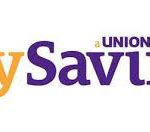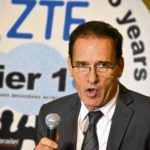
Stocks seen to recover in 2017
Main price barometer forecast to rally to 8,000 on strong economic fundamentals
By: Doris Dumlao-Abadilla – Reporter / @philbizwatcherPhilippine Daily Inquirer / 12:30 AM December 27, 2016
https://business.inquirer.net/222075/stocks-seen-recover-2017
The local stock barometer can revisit the 8,000 mark in the coming year as the Philippine growth story remains intact despite risks of protectionism in the United States that could hurt the thriving local business process outsourcing (BPO) industry, the chief of BPI Securities said.
In a yearend note to investors, BPI Securities president Michaelangelo Oyson said the country was still poised to deliver a 2017 gross domestic product growth exceeding 6 percent, driven by a 400-basis-point contribution from consumption, 150-basis-point share from investments and 60- to 80-basis-point contribution from government expenditures.
While the BPO sector could be negatively affected by potential protectionist policies from US President-elect Donald Trump, Oyson said “eventually the political rhetoric will be tempered by the political realities.”
Locally, he also expressed optimism that the financial and economic architects of the Duterte administration would deliver a proposed tax reform package that, in turn, could boost consumption and investments.
The Department of Finance (DOF) submitted to Congress last September the first package of tax reforms designed to lower personal income taxes rates over time to 25 percent from 32 percent. The package also includes the expansion of the value-added tax (VAT) base, the adjustment of excise taxes imposed on petroleum products and the restructuring of the excise tax on automobiles except for buses, trucks, cargo vans, jeeps, jeepney substitutes and special purpose vehicles.
“It is safe to say that the final form may be diluted given expected horse-trading in Congress,” Oyson said.
While the Philippine Stock Exchange index (PSEi) has pulled back sharply from its peak of about 8,100, Oyson said he was still “constructive” on the market given current valuations.
“While the unwind from emerging markets (EM) to developed markets (DM) continues with the unraveling of the reach for yield thematic, I recommend to investors to start nibbling on good names given my view that value is emerging in the Philippines,” he said.
“I am of the view that the index could once again pierce 8,000 in 2017. It is understandable for investors to ask for catalysts for a reversal in the downtrend. For now, it is comforting to note that in the recent past the trend reversal was not driven by any apparent catalyst.”
In 2014 and 2016, Oyson recalled that the Philippine market eventually recovered with no clear attributable catalyst in sight at the height of the investor risk aversion toward EMs.
“Foreign investors came back when the dust settled and found solace in the strong economic numbers of the Philippines,” he said.
To date, the PSEi is trading closer to the price to earnings (P/E) ratio of 15x, which means investors are paying 15 times the kind of money they expect to make in the coming year. In recent years, the index traded at much higher multiples.
“Conceptually, I find it difficult to accept that the market multiples will be stuck at lower levels given bull markets in the Philippines have historically coincided with strong US markets and given robust Philippine economic fundamentals,” Oyson said.
Oyson explained that the risk to his sanguine view would be if yield-seeking funds would choose to stay out of emerging markets for a longer time if US interest rates rise faster than expected in light of Trump’s infrastructure spending plans.









